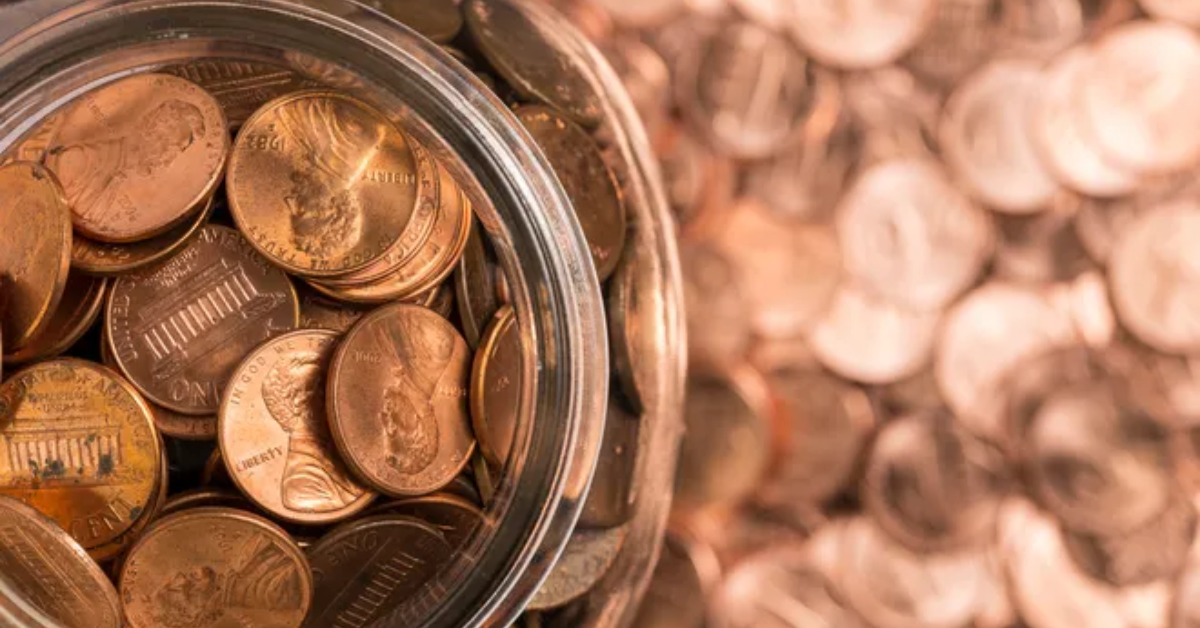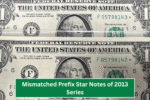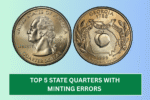That old jar of loose change on your kitchen counter might be worth more than you think—especially if it contains one of several rare pennies that collectors and coin experts are watching closely. While most pennies are worth just one cent, rare variations or those from specific years can fetch hundreds or even thousands of dollars depending on their condition and rarity.
As inflation continues to grow and people look for new ways to boost their income, coin collecting—especially the search for rare pennies—has seen a notable resurgence. Here’s what the experts say about which pennies are worth your attention, and how to know if you have one.
The 1943 Copper Penny
One of the most famous and valuable rare coins is the 1943 copper penny. During World War II, the U.S. Mint switched from copper to zinc-coated steel to preserve copper for the war effort. However, a few copper blanks from 1942 accidentally made their way into the 1943 production line, producing extremely rare 1943 pennies struck in copper.
Only a few dozen of these coins are known to exist today. In 2010, a 1943 copper penny sold for $1.7 million at auction. If you find a 1943 penny that appears copper rather than silvery steel, do not spend it—it can be tested with a magnet (steel pennies will be magnetic; copper ones will not). If it is non-magnetic and shows the 1943 date, it could be extremely valuable.
The 1955 Doubled Die Penny
Another notable rarity is the 1955 doubled die penny. Due to a misalignment during the minting process, these pennies display a noticeable doubling of the features, especially in the inscriptions LIBERTY, IN GOD WE TRUST, and the date.
Collectors value these coins highly. A 1955 doubled die penny in average circulated condition can sell for over $1,000, while high-grade examples have been known to reach $10,000 or more. The doubling is usually visible to the naked eye, making it one of the easier rarities to spot for non-experts.
The 1909-S VDB Lincoln Cent
This coin marks a milestone in U.S. coin history—it was the first Lincoln penny ever minted, created to commemorate the 100th anniversary of President Abraham Lincoln’s birth. Designed by Victor David Brenner, the coin features his initials “VDB” on the reverse side, near the bottom.
While many 1909 Lincoln cents were made, the San Francisco mint issue—the 1909-S VDB—is extremely rare. Only 484,000 were minted, and it is one of the most sought-after pennies by collectors. Depending on condition, these pennies can be worth from a few hundred to several thousand dollars.
Other Pennies That Might Be Valuable
There are several other key dates and rare varieties to look for:
– 1944 Steel Penny: The opposite of the 1943 copper penny, a few 1944 pennies were mistakenly made with leftover steel blanks. These can be worth over $100,000.
– 1983 Doubled Die Reverse: Look for doubled lettering on the reverse side, notably in E PLURIBUS UNUM. Depending on the quality, these can sell for several hundred dollars.
– 1992 Close AM Penny: A rare misprint where the “A” and “M” in “AMERICA” are closer than usual. These can fetch thousands of dollars when authenticated.
How to Check If You Have a Rare Penny
Experts advise taking a close look at your coins, especially from the early and mid-20th century. You may not need specialized gear—just a magnifying glass, good lighting, and a sharp eye. For increased accuracy, coin shops and numismatics enthusiasts recommend investing in a jeweler’s loupe or digital coin microscope.
Consider focusing on coins that stand out by color, design inconsistencies, or those that just look different. When in doubt, compare them to known examples of rare pennies found in trusted databases or guides.
Professional evaluation is essential before selling any suspected rare coin. Certified appraisers or grading companies like PCGS (Professional Coin Grading Service) or NGC (Numismatic Guaranty Corporation) can formally assess and certify your coin’s authenticity and grade. This can dramatically influence its market value.
Where to Sell Rare Pennies
If you discover what you believe to be a valuable coin, you have many options. Local coin dealers, online coin marketplaces, auctions, and even eBay can be good places. However, experts recommend working with reputable dealers or auction houses for high-value rare coins to ensure you receive top dollar and avoid scams.
James Bucki, a numismatics expert and contributor to The Spruce Crafts, notes that “even a small detail can make a big difference in a coin’s value. The rarest coins often come from years when the mint was transitioning designs, materials, or dealing with production errors.”
Keep in mind that condition also plays a key role. A rare penny in poor condition may only fetch a fraction of the value it would in mint or uncirculated state. So, handling coins carefully and storing them in protective cases is crucial for preserving value.
Conclusion
That humble coin jar you’ve been ignoring might contain a hidden gem. Rare pennies like the 1943 copper penny or the 1955 doubled die cent demonstrate that big value can come in small packages—even something as small as one cent.
Experts recommend becoming familiar with key dates, double die errors, and mint marks to increase your chances of spotting a valuable coin. And before you rush to exchange your change at the bank or grocery store, take a few minutes to inspect your pennies—you just might get lucky.



